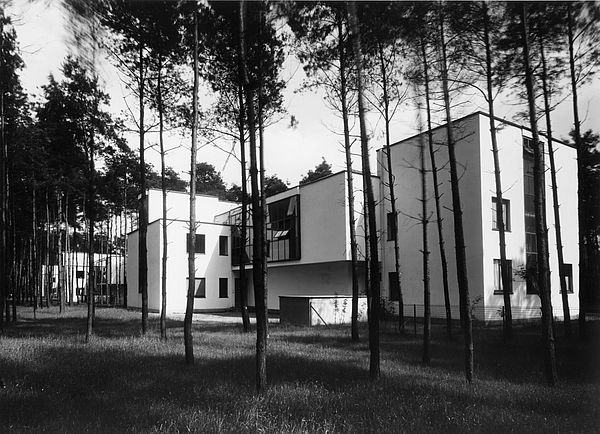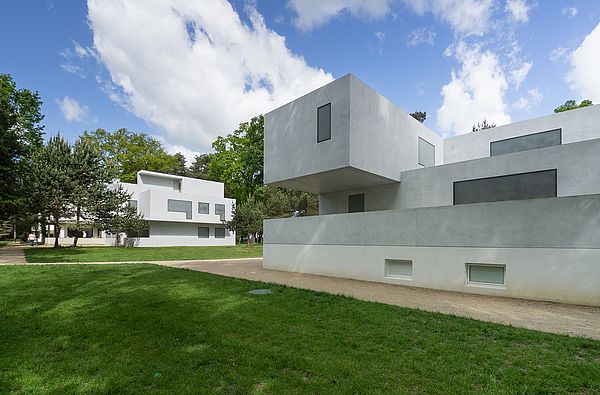Masters’ Houses, Dessau
Walter Gropius, 1926
The reconstructed Gropius and Moholy-Nagy Master’s Houses in Dessau were re-opened three years ago. We take a brief look at the originals and their reconstructions.
[Translate to English:] headline
The photographs taken by Lucia Moholy of the ensemble of Masters’ Houses in Dessau still influence our image of the Bauhaus and modern architecture to this day. The single director’s house, which was destroyed during the war, and the three double houses for the Bauhaus masters were designed by Walter Gropius and built by his architecture office on an elongated plot with a stock of pine trees.
The outer shape of the buildings, the organisation of their rooms according to their usage and light sources, as well as their interior furnishing with built-in closets and shelves, correspond with the principles of functional building and represent a further development of Gropius’s idea of a “large-scale building set”.
The double houses consist of reflections of their respective halves on the same floor plan rotated by 90°, which makes their visual impact highly heterogeneous. To provide structuring for the main buildings, the projecting building elements and/or window embrasures were framed in colour.

[Translate to English:] headline
The unified overall image of the complex, which was realised according to the requirements of its future inhabitants, contradicts the colourful designs of the interior spaces. These resulted from the individual preferences of the masters and are still seen as evidence of their different characters.
The National Socialists’ victory in the local government elections in Dessau in 1932 led to the closure of the Bauhaus. As a result the artists left their homes in the complex of Masters’ Houses. Shortly before the end of the Second World War the houses of Walter Gropius and Lázló Moholy-Nagy were completely destroyed in an air raid.
In 2014 the Berlin-based architects Bruno Fioretti Marquez (BFM) replaced the missing buildings with contemporary interpretations. Based on an “architecture of imprecision” these autonomous buildings allow for clear differentiation between original and new interpretation.
